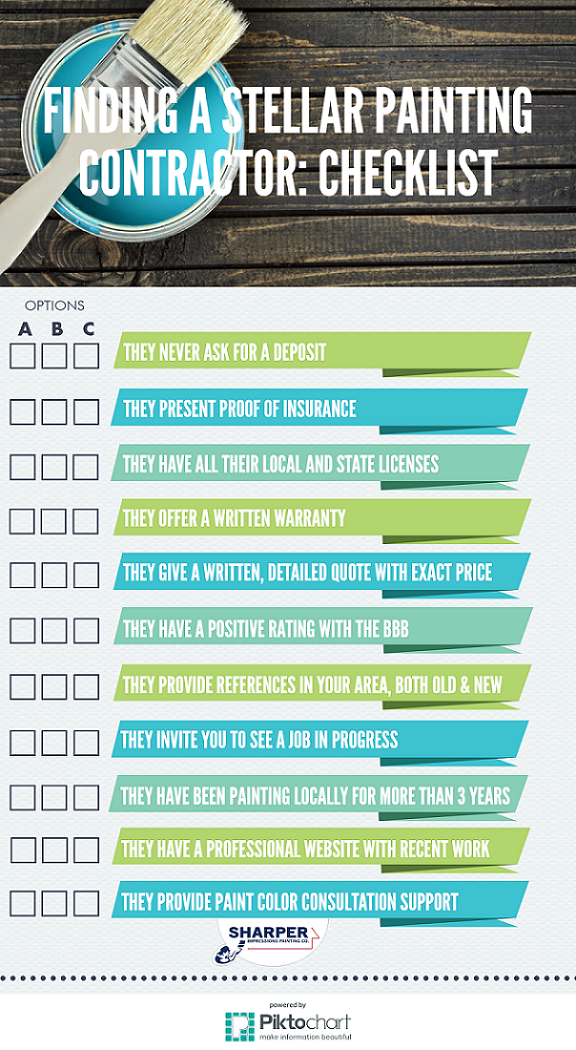Discover The Influence Of Weather Conditions On Your Exterior Painting Job For A Perfect Surface
Discover The Influence Of Weather Conditions On Your Exterior Painting Job For A Perfect Surface
Blog Article
Content Produce By-Walls Mohammad
Recognizing how weather can affect the outcome of an exterior painting endeavor is vital for accomplishing a remarkable surface. From temperature level variations modifying paint adhesion to humidity levels influencing drying times, each element of weather condition plays a substantial role in the success of your job. Moreover, wind speed and precipitation can present unexpected difficulties that might compromise the high quality of the result. As we browse through the nuances of climate's influence on exterior paint, it comes to be noticeable that careful planning and tactical timing are critical for ensuring a professional and durable result.
Perfect Temperature Array for Paint
When considering external paint jobs, the optimal temperature variety plays a critical function in accomplishing ideal results. Paint in the right temperature level problems ensures that the paint adheres appropriately to the surface, dries evenly, and treatments successfully. Generally, the advised temperature level variety for outside painting is in between 50 to 85 levels Fahrenheit.
Paint in temperature levels listed below 50 degrees Fahrenheit can cause concerns such as bad paint adhesion, extended drying out times, and an increased chance of breaking or peeling.
On the other hand, paint in temperatures above 85 degrees Fahrenheit can trigger the paint to dry too swiftly, leading to blistering, gurgling, and an uneven finish.
To achieve the most effective outcomes, it is vital to inspect the weather prediction prior to starting an external painting project. Ideally, goal to repaint throughout mild weather conditions with modest temperatures and reduced moisture degrees.
Impacts of Moisture on Paint Drying
Humidity degrees considerably impact the drying process of paint related to exterior surface areas. High humidity can prolong the drying out time of paint, leading to prospective issues such as leaking, streaking, or perhaps the development of bubbles on the repainted surface. Excess wetness in the air slows down the evaporation of water from the paint, preventing the curing procedure. This is particularly problematic for water-based paints, as they rely upon evaporation for drying out.
On the other hand, low moisture levels can additionally affect paint drying. Extremely dry problems may cause the paint to completely dry as well rapidly, causing bad adhesion and a harsh finish. In Commercial Paint Colors Interior , adding a paint conditioner or spraying a fine haze of water in the air can assist regulate moisture levels and improve the paint result.
To guarantee Quality Painting Pros Interior & Exterior Residential & Commercial Painting drying problems, it is advisable to paint when the humidity levels range in between 40% and 50%.
Monitoring moisture levels and taking proper steps can assist attain a smooth and sturdy paint surface on outside surface areas.
Wind and Rainfall Considerations
Wind rate and rainfall are critical factors that substantially impact the success of an external paint project.
When it concerns wind, both speed and direction are vital considerations. https://local-painters-near-me87654.worldblogged.com/37895791/look-into-advanced-techniques-for-indoor-painters-to-best-their-craft-and-accomplish-remarkable-coatings-effortlessly-your-next-level-waits-for can trigger paint to dry also swiftly, leading to a poor do with potential problems like cracking or uneven structure. In addition, wind can lug debris that might adhere to the damp paint, resulting in flaws. For that reason, painters ought to aim to deal with days with light to moderate winds for optimum paint conditions.
On the other hand, precipitation, whether rain or snow, can be extremely destructive to the result of an external painting task. Wetness from precipitation can hinder paint bond, triggering peeling off and bubbling over time. It is critical to prevent painting during stormy or snowy weather to ensure the longevity and high quality of the paint task. Painters should likewise enable ample time for the surface to completely dry completely after any kind of rainfall prior to beginning or resuming the paint process.
Verdict
Finally, climate condition play a considerable role in the end result of an external paint job. The excellent temperature variety, humidity degrees, wind rate, and precipitation all contribute to the success or failure of the paint job.
It is vital to think about these elements and plan appropriately to make sure proper paint attachment, drying out times, and general top quality of the finished product.
